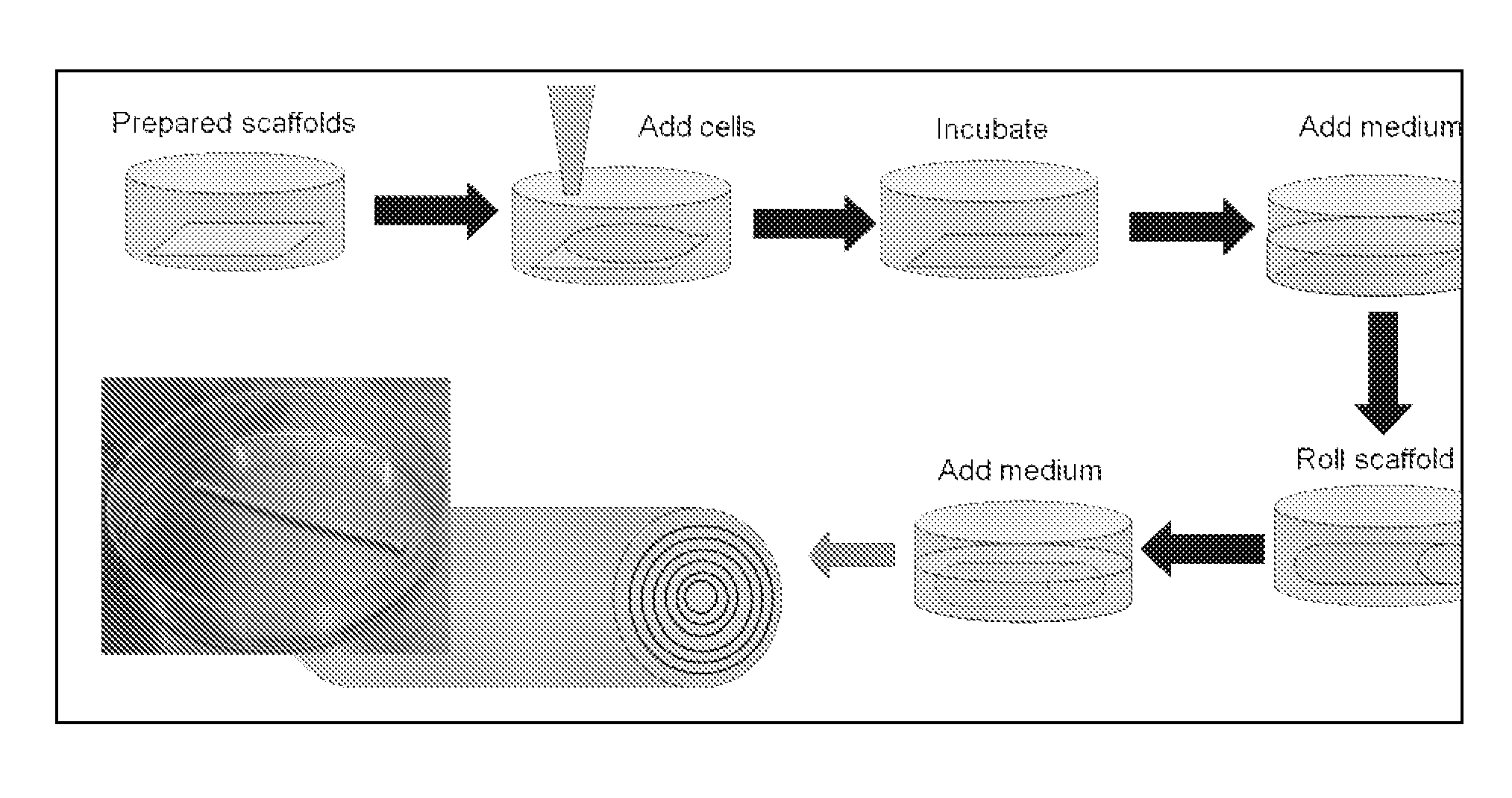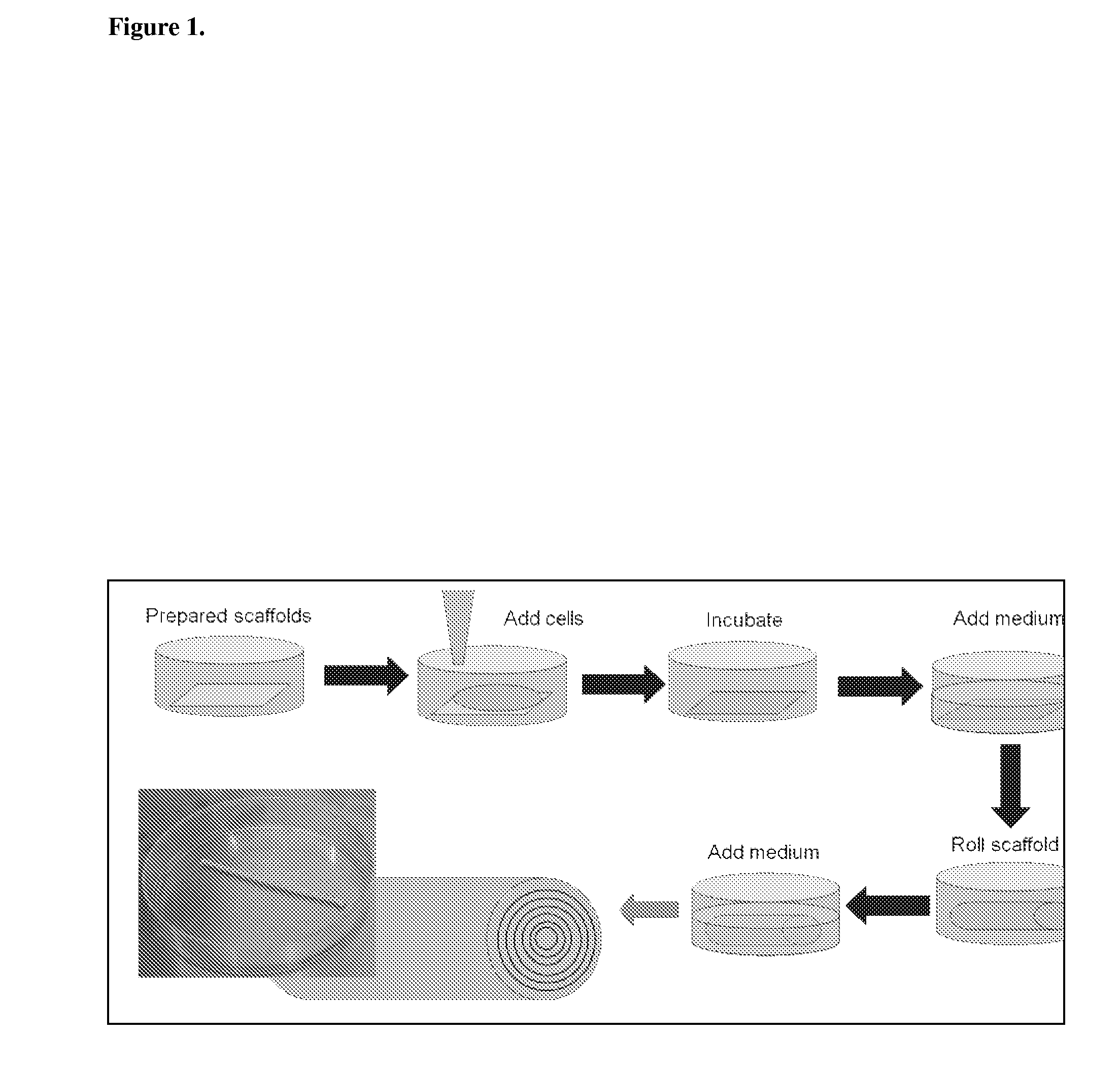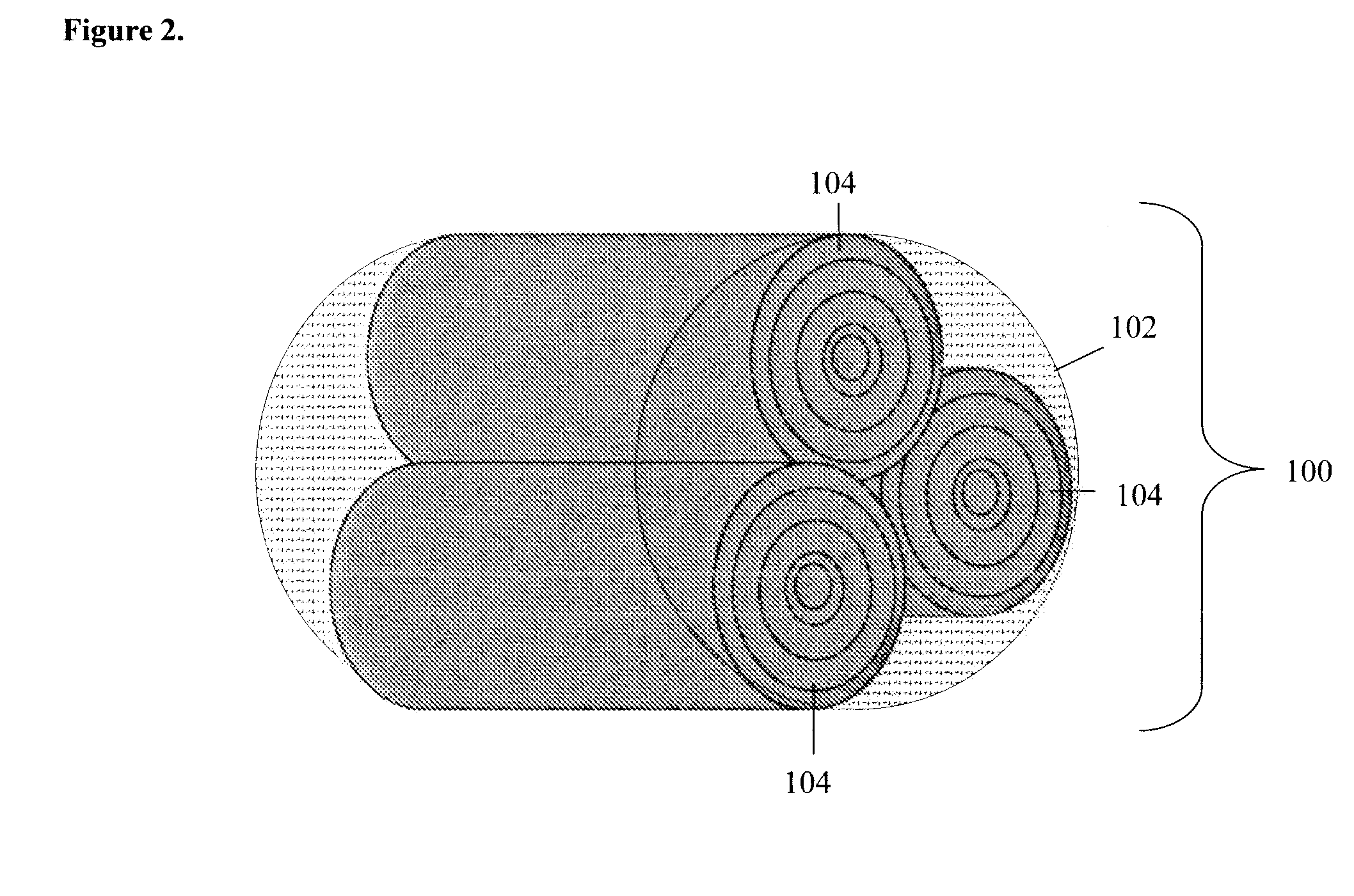Scaffolds for tissue engineering and regenerative medicine
a tissue engineering and regenerative medicine technology, applied in the field of tissue regeneration and replacement, can solve the problems of current repair strategies and inability to regenerate normally
- Summary
- Abstract
- Description
- Claims
- Application Information
AI Technical Summary
Benefits of technology
Problems solved by technology
Method used
Image
Examples
examples
[0112]Described herein are methods and compositions using aligned nanofiber materials as scaffolds for engineering tendon or ligament tissues with stem / progenitor cells. Described herein is a novel strategy to produce a cell-integrative biomimetic scaffold for tenogenesis and tendon / ligament engineering. Aligned nanofiber scaffolds were seeded with progenitor cells and subsequently rolled with the leading edge parallel to the axis of alignment. This aligned nanofiber scaffold locally mimicked the native microstructure of tendon / ligament (aligned collagen fibrils), globally mimicked a fascicle or bundle in tendon / ligament tissue, and resulted in cell seeding throughout the construct. This design avoids poor cell seeding throughout the scaffold that is a major limitation of aligned scaffolds due to their low porosity as a result of closely packed aligned fibers.
Scaffold Fabrication
[0113]Electrospun polycaprolactone (PCL) (10% w / v) in chloroform:methanol 2:1 (v:v); PCL:collagen type I ...
PUM
 Login to View More
Login to View More Abstract
Description
Claims
Application Information
 Login to View More
Login to View More - R&D
- Intellectual Property
- Life Sciences
- Materials
- Tech Scout
- Unparalleled Data Quality
- Higher Quality Content
- 60% Fewer Hallucinations
Browse by: Latest US Patents, China's latest patents, Technical Efficacy Thesaurus, Application Domain, Technology Topic, Popular Technical Reports.
© 2025 PatSnap. All rights reserved.Legal|Privacy policy|Modern Slavery Act Transparency Statement|Sitemap|About US| Contact US: help@patsnap.com



